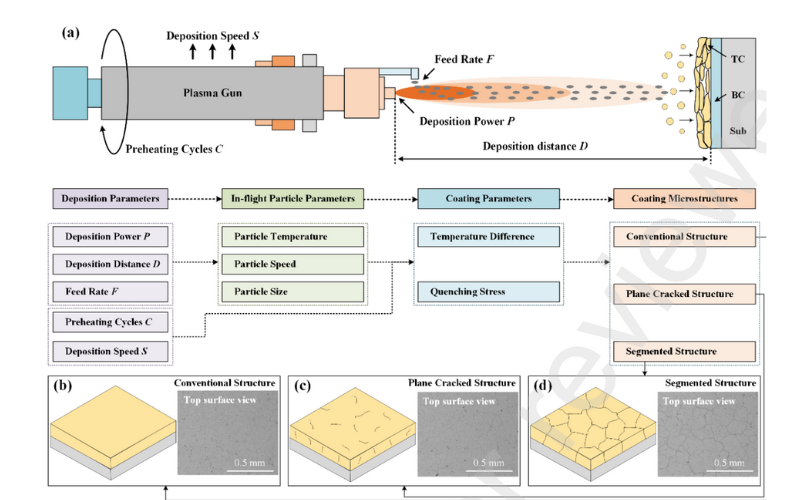沉积参数对分段式Aps-Tbcs表面裂纹形成的影响
采用空气等离子喷涂 (APS) 方法制备的热障涂层系统 (TBC) 被广泛认为是陆基发动机和航空发动机中最普遍的隔热材料。由于沉积过程中的显著热应力而产生的表面裂纹被广泛认为是提高 APS-TBC 应变耐受性和耐久性的有效策略。因此,具有通道表面裂纹的分段结构已被确定为一种非常特殊的 APS-TBC 类型,具有出色的应变耐受性和长期适用性。然而,控制沉积参数与导致 APS-TBC 中表面裂纹形成的分段开裂之间关系的潜在机制仍未完全阐明。在本文中,我们进行了实验分析,以研究五个选定的沉积参数对制造过程中面漆 (TC) 中诱导的峰值淬火应力的敏感性。随后,我们建立了五个沉积参数与峰值淬火应力之间的定量关系,增强了我们对这些参数如何影响分段开裂的理解。在研究过程中,我们利用DVP-2000设备监测了不同沉积条件下粒子的飞行参数,利用自主研发的实时曲率测量设备监测了涂层的力学参数,进一步分析了粒子与涂层参数之间的相关性。根据它们对淬火峰值应力的相对影响,我们确定这五个沉积参数对分段开裂的敏感性为:沉积功率>沉积速度>预热循环次数>沉积距离>进给速率。此外,根据实验结果,我们建议设置最佳沉积参数如下:最高功率、最低速度、最高预热循环次数、最低距离和最低进给速率,以提高制备表面裂纹密度可控的分段式APS-TBC的可能性。这些实验观察为改造APS设备或优化其参数以实现分段式APS-TBC的简单高效制备提供了有价值的指导。
关键词:空气等离子喷涂、热障涂层、分段结构、表面裂纹、沉积参数
作者:Yang LiuYu, Chen Yiwen, Li Dingjun and Jiang Peng
